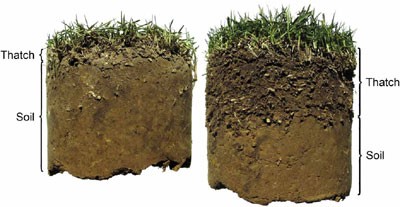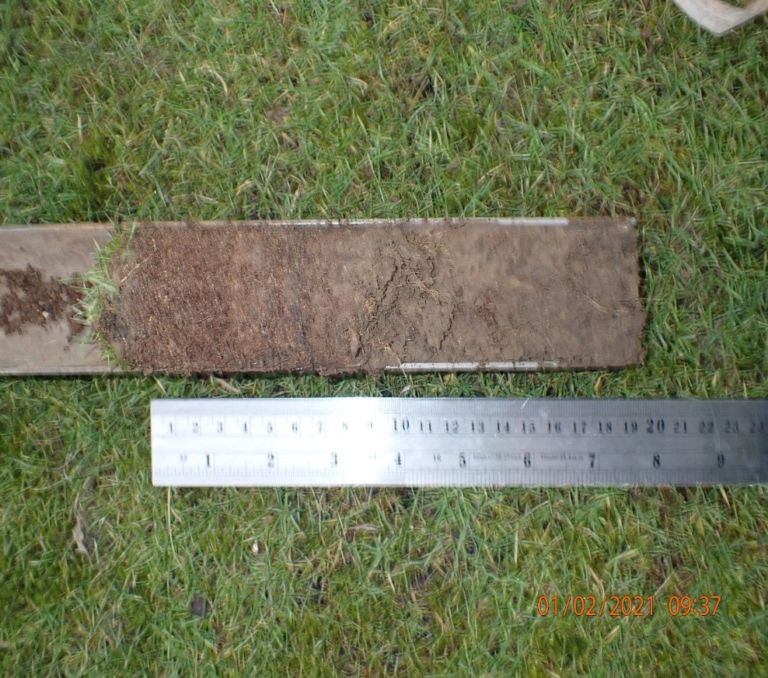With the Greens Maintenance Advisory Service reaching the milestone of 100 answered emails via our online submission form, our Greens Maintenance Advisor, Alan Lewis, has produced some key advice for all greenkeepers taking into account the most common turf questions that have been asked.
One key area of note is from clubs who are looking to take on green maintenance themselves, either totally or part of the maintenance, and wish to ascertain the important operations throughout the year. Before you start to maintain a turf surface, you need to have an idea of the standard of the green.
- Try and get into the habit of two annual operations to check the green quality. Firstly, it is key to have a soil test to check soil chemistry. Fertiliser is expensive, so find out what your green needs with a soil test – do not just keep using the same fertiliser year in, year out.
- What is your greens pH level of acidity and alkalinity? pH affects many things on a green such as the grass species, weed content, pest, disease, and availability of nutrients. The grass grown on a bowling green need a pH of 5.5 to 6.0 – a pH over 7 encourage worms, Leatherjackets, Chafer grubs and the weed grass Annual Meadow Grass Poa annua which can be a host for diseases like Fusarium.
- Take a profile of the green (see photograph 1). This will allow you to look at root growth, layers in the profile and the depth of thatch (organic matter). This profile will help you select the equipment and operations to maintain and improve the green, such as aerators to improve root growth and the type of scarifier and tines to use to deal with the depth of thatch.
Leading on from the profile is a regular question which is soft green surface and a slow green. There can be several items which can leading to a soft and slow bowling surface, such as:
- The presence of Moss. This Moss is called Winter Moss (Ceratodon purpureus and Bryum spp) and is a trailing moss. It must be treated before May as the green will dry out and the Moss will disappear. Apply a Lawn Sand made up of Ferrous sulphate and Sulphate of Ammonia at the manufacturer rate in late March/April and when the Moss turns black scarify out and collect the dead material.
- The presence of Annual Meadow Grass (Poa annua). This is a weed grass which is an annual with poor root growth and produces organic matter creating a soft, slow bowling surface. Create the conditions for the correct grass – Fescue and Bents.
- If Rooks, Starlings, and other birds have been feeding on turf, they normally are after Chafer Grubs Phyllopertha horticola or Leatherjackets Tipula spp. These pests are encouraged by high levels of organic matter and eat grass roots which weakens the turf surface.
- Regular verti-cutting of the surface during the season (only the grass plant not the soil) will improve the green speed.
All these conditions and the speed of the green indicate the presence of thatch (organic matter) in the surface of the green profile. Thatch builds up over the years and leads to a soft, slow green with reduce bias movement. Thatch should be reduced as part of the end of season renovations.
The profile should look like the profile on the left (see photograph 2), not with the thatch level of the profile on the right.
Take a profile and check the level of thatch – if it is more than 5mm to 10mm, plan a spring scarification and aim for a major scarification as part of the autumn renovation. Use a scarifier with thatch removal tines. It is not possible to remove all the thatch in one year, so a 3-year plan is sensible.
As increase to the autumn/winter aeration with solid tines is also recommended, trying to aerate once a month if conditions are suitable, mainly when there is no frost on the surface.
The Greens Maintenance Advisory Service is here to help, with free practical independent advice and assistance to affiliated clubs regarding all issues related to a bowling surface. If you would like some guidance from our specialist Advisor, please submit your questions and any associated photographs via our online submission form.


